Emil Schumacher. Bilder und Gouachen
14 September to 26 October 2019 ⟶ Corneliusstraße
Partial view of the exhibition
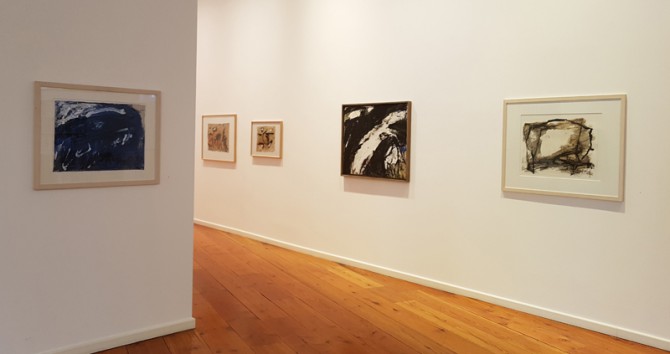
Partial view of the exhibition
Riva, 1994, oil/canvas, 80.5 x 96 cm
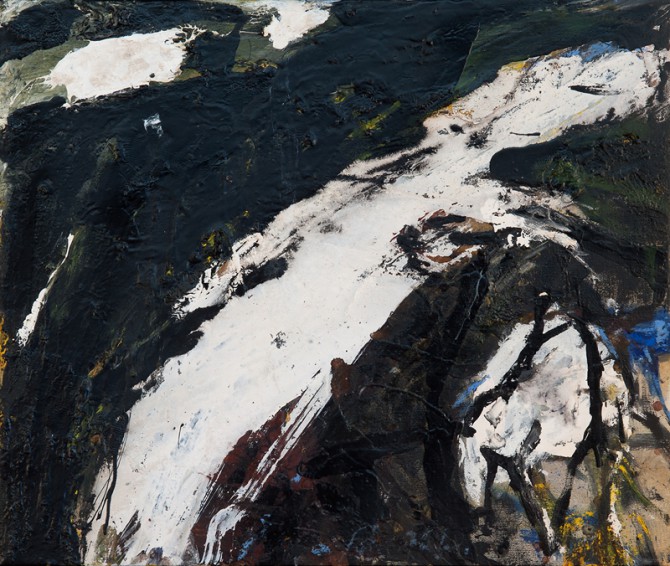
Riva, 1994, oil/canvas, 80.5 x 96 cm
Tamalan, 1996, mixed media/canvas/wood, 170 x 250 cm
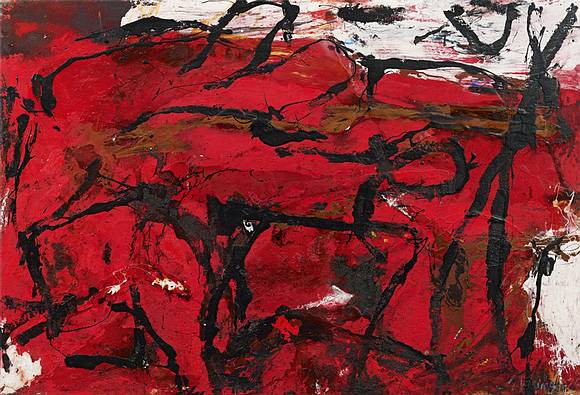
Tamalan, 1996, mixed media/canvas/wood, 170 x 250 cm
Partial view of the exhibition
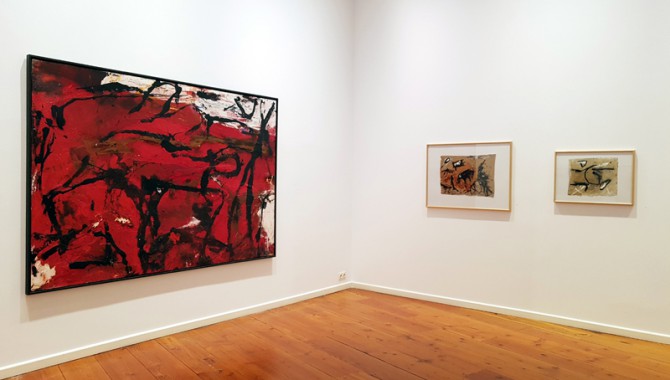
Partial view of the exhibition
GB-9, 1999, gouache on brown wrapping paper, 47 x 65.5 cm
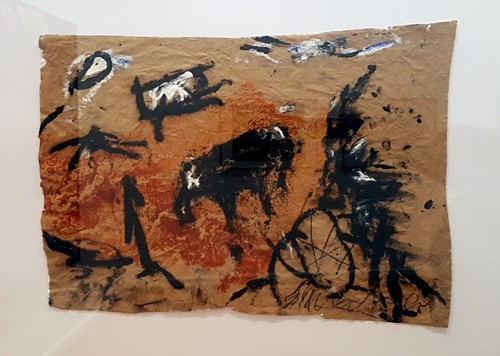
GB-9, 1999, gouache on brown wrapping paper, 47 x 65.5 cm
GE-9, 1997, gouache on handmade paper, 37 x 44.5 cm
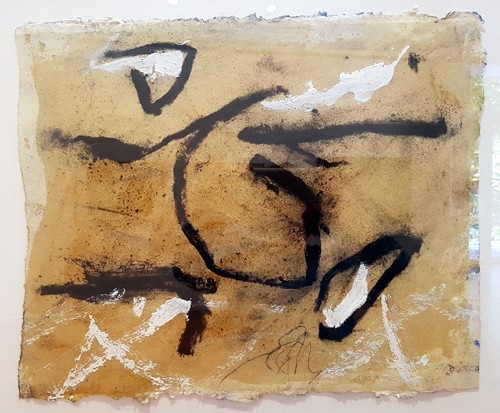
GE-9, 1997, gouache on handmade paper, 37 x 44.5 cm
G-41, 1987, Gouache on handmade paper, 50.5 x 65 cm
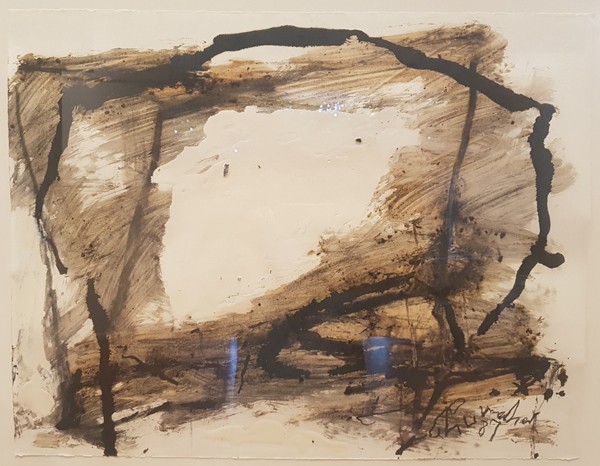
G-41, 1987, Gouache on handmade paper, 50.5 x 65 cm
Partial view of the exhibition
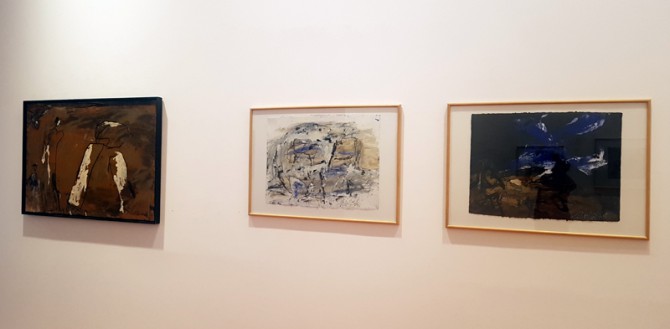
Partial view of the exhibition
Dolobo, 1984, mixed media/wood, 84.5 x 125.5 cm
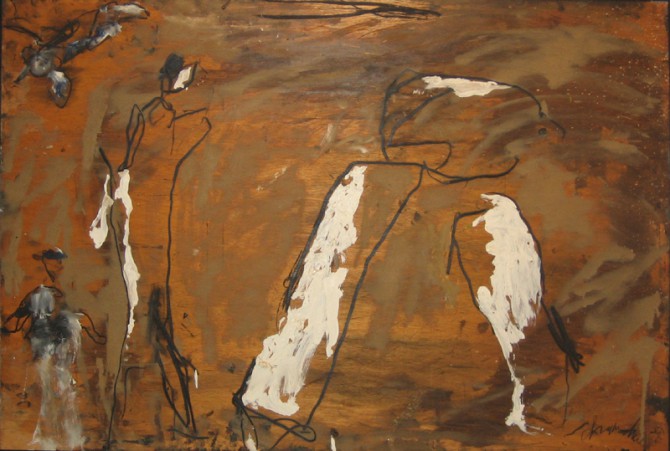
Dolobo, 1984, mixed media/wood, 84.5 x 125.5 cm
left: GE-6, 1995, gouache on handmade paper, 56.5 x 75 cm
right: GB-30, 1995, gouache on black Aquari handmade paper, 57 x 74.5 cm
right: GB-30, 1995, gouache on black Aquari handmade paper, 57 x 74.5 cm
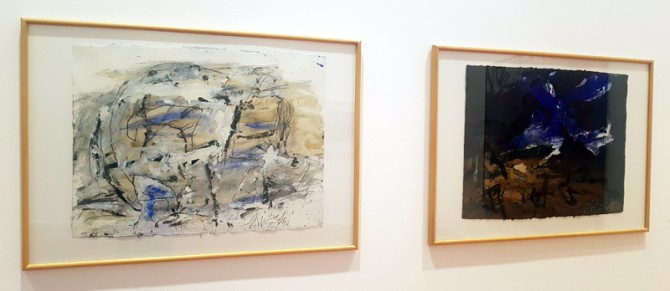
left: GE-6, 1995, gouache on handmade paper, 56.5 x 75 cm
right: GB-30, 1995, gouache on black Aquari handmade paper, 57 x 74.5 cm
right: GB-30, 1995, gouache on black Aquari handmade paper, 57 x 74.5 cm
Partial view of the exhibition
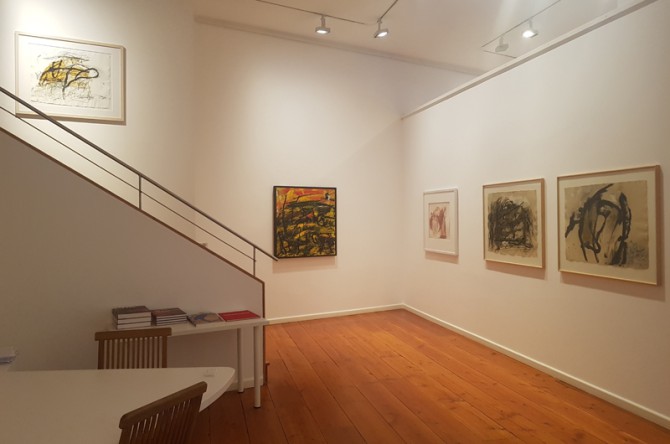
Partial view of the exhibition
Tolo, 1992, oil/canvas, 102 x 101.5 cm
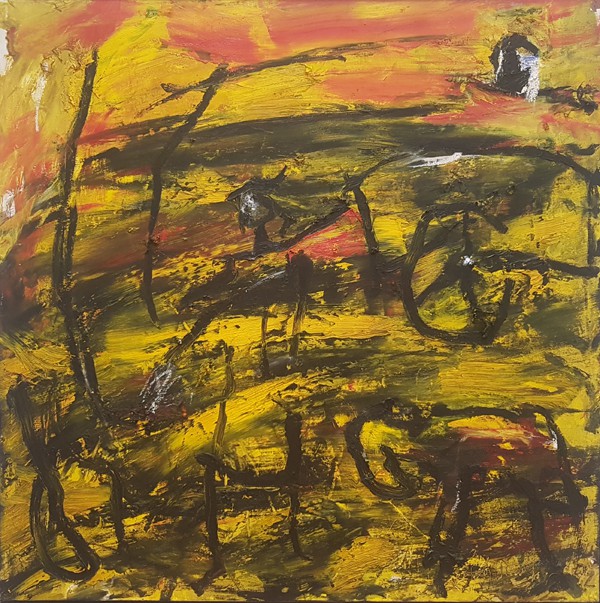
Tolo, 1992, oil/canvas, 102 x 101.5 cm
G-57, 1988, Gouache on handmade paper, 50.5 x 66 cm
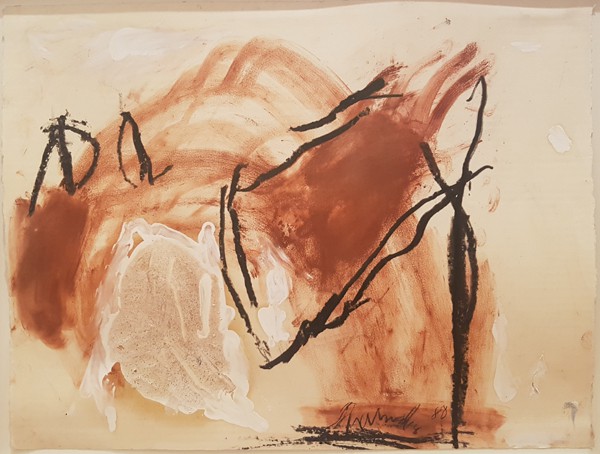
G-57, 1988, Gouache on handmade paper, 50.5 x 66 cm
GG-8, 1991, gouache on coloured handmade paper, 69 x 94 cm
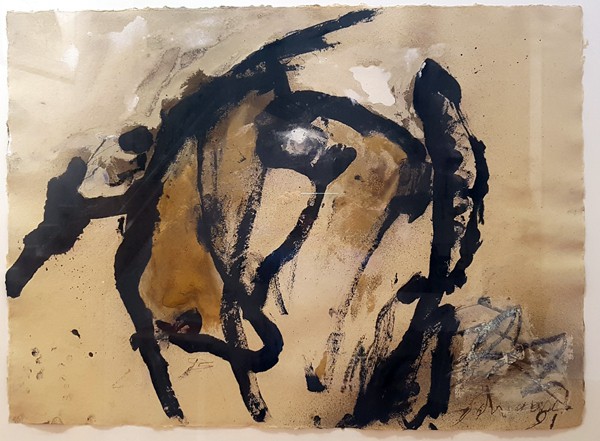
GG-8, 1991, gouache on coloured handmade paper, 69 x 94 cm
GG-20, 1991, gouache on coloured handmade paper, 69 x 94 cm
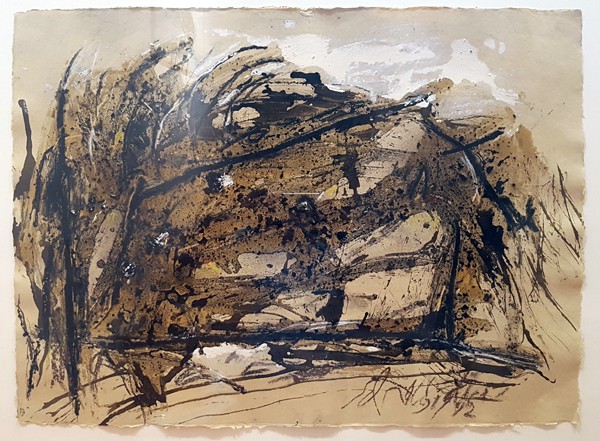
GG-20, 1991, gouache on coloured handmade paper, 69 x 94 cm
GE-16, 1997, gouache on handmade paper, 58 x 76.5 cm
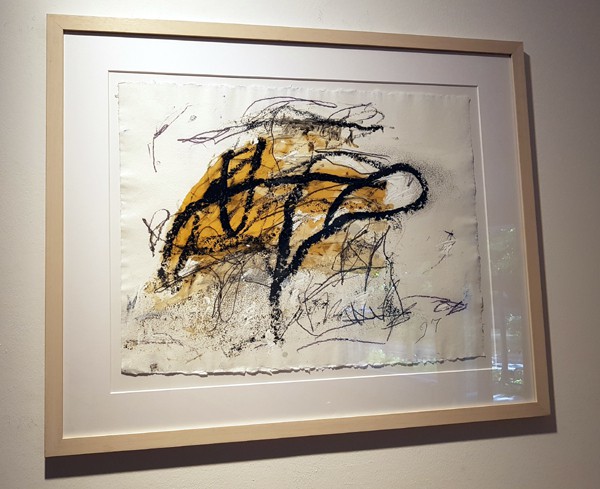
GE-16, 1997, gouache on handmade paper, 58 x 76.5 cm
Partial view of the exhibition
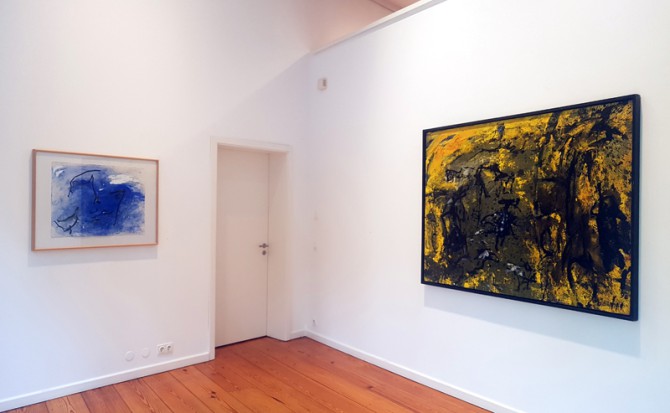
Partial view of the exhibition
Densis, 1993, mixed media/canvas, 124.5 x 170 cm
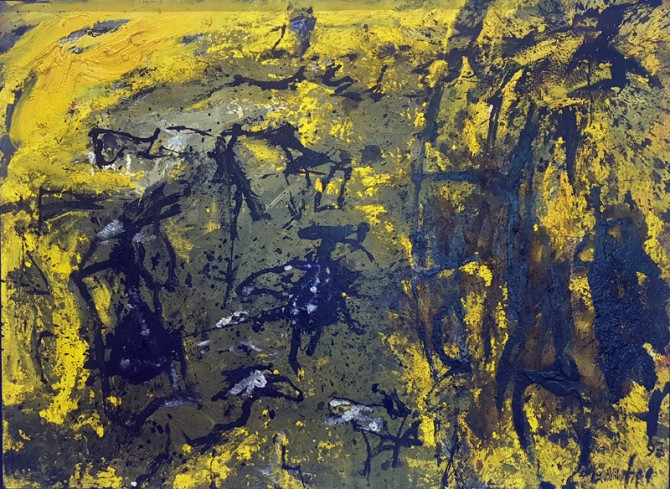
Densis, 1993, mixed media/canvas, 124.5 x 170 cm
Partial view of the exhibition
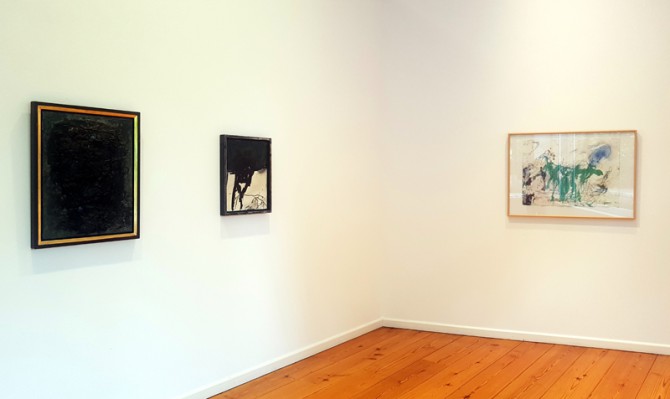
Partial view of the exhibition
Nefas, 1959, oil/canvas, 65 x 50 cm
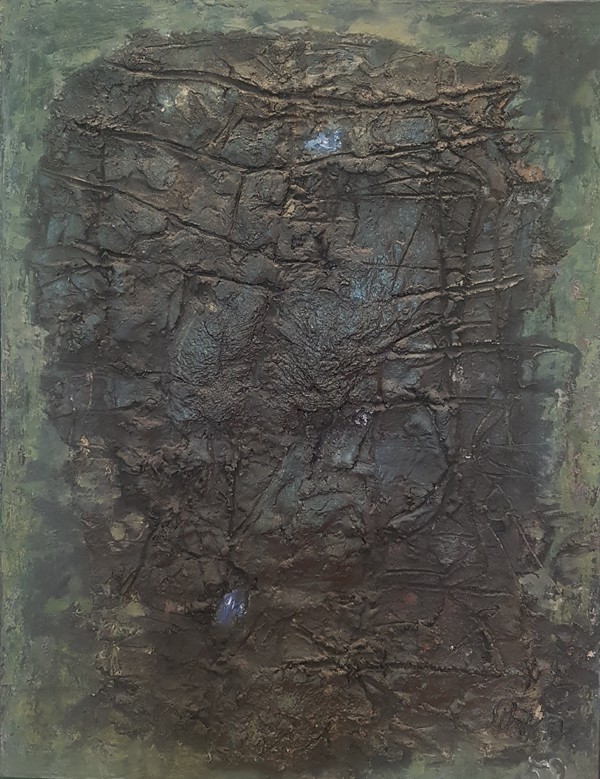
Nefas, 1959, oil/canvas, 65 x 50 cm
Terrano VI, mixed media/canvas, 1990, 50 x 40 cm
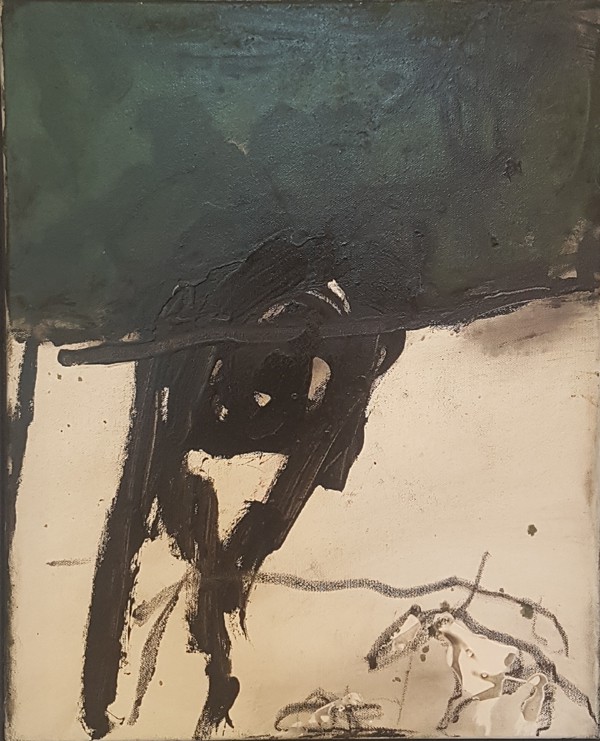
Terrano VI, mixed media/canvas, 1990, 50 x 40 cm
GG-12, 1996, Gouache on handmade paper, 58 x 77 cm
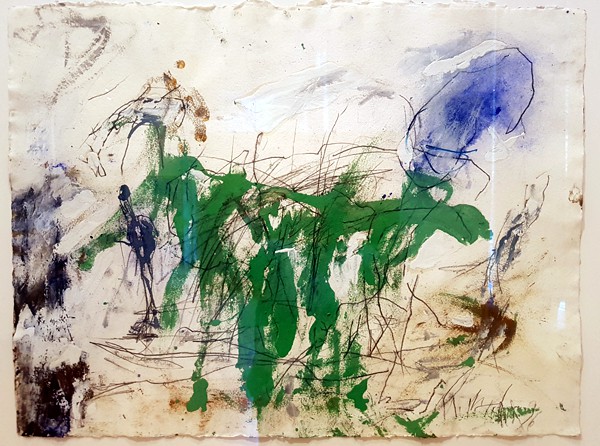
GG-12, 1996, Gouache on handmade paper, 58 x 77 cm
O.T., 1984, gouache/newsprint, 41 x 58 cm
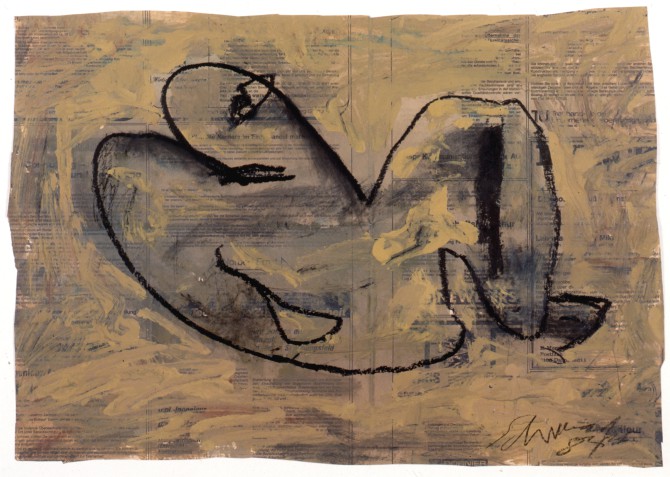
O.T., 1984, gouache/newsprint, 41 x 58 cm
Emil Schumacher's painting is characterised by a physical and sensual presence of colour and matter that the viewer can hardly escape. The oil colours, bright yellows, reds and blues or earthy, dirty greys, browns and blacks, are applied impasto to the canvas, the wooden panel or the paper. The result is eruptive compositions with overlapping layers in which the paint seems to coagulate, streaks, forms islands, raises clods. In Schumacher's work, the visible surface is always the result of a lengthy creative process in the course of which the painting undergoes a variety of metamorphoses. The disclosure of the process of creation and its visual comprehensibility on the part of the viewer are the artist's basic concerns. What attracts him to colours is their sensual effect and their haptic qualities: "I take a colour as I would bite into an apple or shake hands with a friend" (1957). The same applies to unfamiliar, i.e. "non-art" materials - be it earth, sand, stones, moss, sisal fibres, potato weed, textiles, wood, paper, hair, glass, sheet metal, wire mesh, lumps of asphalt or dried fruit, whose experimental and also playful use inspire Schumacher's pictorial curiosity and imagination. The line also has a picture-constituting function. It divides the surface, it delimits or excludes areas, it creates positive and negative forms. It summarises or divides, it conceals or releases the view, it condenses or evaporates, sets accents, defines form and space in the interplay with colour and plastic elements: "Line that describes space. Arcs that span it, contours that delimit it" (1972). The line appears in various forms: it can be impulsively spontaneous or calmly reflective, regular or irregular, incised or applied, nervously vibrating or calmly flowing. If Schumacher's painting in his late work increasingly shows echoes of the representational, for example in the form of wheel, house and staircase shapes, bird or other animal motifs or, more generally, through associations with the landscape, the creaturely or the material, this is primarily due to the line. (Text: Hans Gercke)